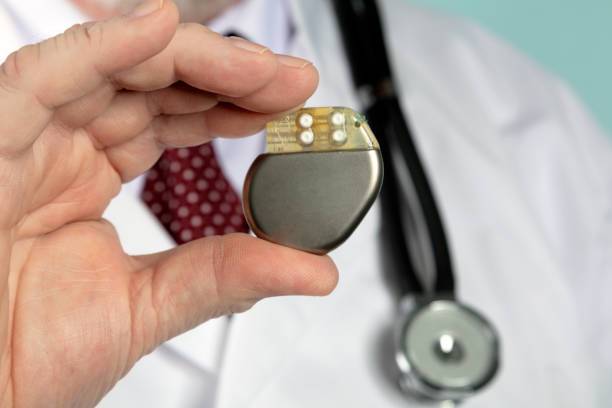Sometimes, the most groundbreaking discoveries happen by accident. In this blog, we will discuss the Accidental Inventions That Changed the World.
Top 10 Accidental Inventions
Here are nine surprising inventions that changed our lives, thanks to some unexpected twists:
1. Post-It Notes (1968): A Sticky Innovation
The Accidental Adhesive
Chemist Spencer Silver at 3M was trying to create a strong adhesive but instead developed a weak one that could be removed easily. Art Fry, a colleague, used this to create bookmarks that wouldn’t fall out of his hymnal. This accidental innovation led to the creation of Post-It Notes.
A Staple in Offices
First marketed in 1980, Post-It Notes became an essential office supply due to their convenience and versatility. This invention shows how a seemingly useless product can become a global staple through innovative thinking.
2. Microwave Oven (1945): A Warm Discovery
The Accidental Meltdown
Percy Spencer, an engineer at Raytheon, noticed that a chocolate bar in his pocket had melted while working on radar technology. This curious observation led him to experiment with microwaves, discovering their ability to cook food quickly. The result was the microwave oven, first introduced as the “Radarange” in 1947 and later becoming a kitchen essential.
Revolutionizing Meal Prep
The microwave oven has transformed meal preparation, making it faster and more convenient. It’s a prime example of how a chance discovery can lead to a major shift in everyday life.
3. Saccharin (1879): A Sweet Accident
The Discovery of Sweetness
In 1879, Constantin Fahlberg, a chemist working with coal tar derivatives, tasted a sweet substance on his hands after a long day in the lab. This led to the discovery of saccharin, the first artificial sweetener. Despite initial concerns, saccharin became a popular sugar substitute, especially for those with diabetes.
The Legacy of Saccharin
Saccharin’s unique chemical structure makes it hundreds of times sweeter than sugar. Despite controversies in the 1970s, it remains a widely used sweetener, showing how an accidental find can have lasting impacts.
4. Safety Glass (1903): An Accidental Innovation
The Shattered Flask
In 1903, chemist Édouard Bénédictus accidentally dropped a flask coated with a layer of plastic, which didn’t shatter as expected. This led to the development of laminated safety glass, which is now used in car windshields and many other applications to prevent injuries from broken glass.
A Safer World
Safety glass has revolutionized the automotive and building industries, offering protection and durability that helps keep people safe.
5. Super Glue (1942): An Unexpected Bond
A Fortuitous Failure
In 1942, Harry Coover, working for Eastman Kodak, created cyanoacrylate while trying to develop a clear plastic for gun sights. Although initially discarded, the adhesive’s strong bonding properties were rediscovered in 1951. The result was Super Glue, which quickly became popular for its rapid and durable adhesive qualities.
The Power of Adhesion
Today, Super Glue is a household staple for quick repairs and creative projects. Its journey from a discarded experiment to an essential tool underscores the power of unexpected discoveries.
6. Velcro (1948): A Hook-and-Loop Surprise
The Curious Case of Burdock
In 1948, Swiss engineer George de Mestral went for a walk in the woods and noticed that burrs from burdock plants stuck to his clothing and his dog’s fur. Intrigued, he examined the burrs under a microscope and saw how their tiny hooks latched onto loops in the fabric. This observation led him to develop Velcro, a fastener made of tiny hooks and loops.
From Nature to Innovation
De Mestral patented Velcro in 1955, and it quickly became a versatile fastening solution. Used in everything from clothing and shoes to space suits, Velcro demonstrates how nature can inspire groundbreaking technologies.
7. Teflon (1938): A Non-Stick Accident
The Mystery of the Missing Molecule
In 1938, chemist Roy Plunkett was working with gases to create a new refrigerant when he discovered that a sample of tetrafluoroethylene had polymerized into a slippery, non-reactive substance. This substance, later named Teflon, had unexpected non-stick properties.
A Revolutionary Coating
Teflon was introduced to the public in 1961 and quickly became known for its use in non-stick cookware. It has since found applications in various industries due to its unique properties, including in electronics and medical devices.

8. X-Rays (1895): A Radiant Revelation
The Accidental Discovery
In 1895, physicist Wilhelm Conrad Roentgen was experimenting with cathode rays when he noticed a fluorescent glow emanating from a nearby fluorescent screen, despite the screen being shielded from direct light. This led him to discover X-rays, a form of radiation that could penetrate materials and produce images of the inside of objects.
Transforming Medicine
Roentgen’s discovery of X-rays revolutionized medicine by enabling doctors to see inside the human body without surgery. Today, X-rays are a fundamental diagnostic tool in medicine, used for everything from broken bones to detecting diseases.
9 . Pacemaker (1958): An Unexpected Life Saver
The Electrical Discovery
In 1958, Dr. John Hopps was researching ways to treat heart problems and accidentally discovered that an electrical impulse could stimulate heartbeats. He created the first implantable pacemaker, which helped regulate heart rhythms and save countless lives.
A Heartbeat Revolution
Pacemakers have since become a standard treatment for people with irregular heartbeats. This accidental discovery has had a profound impact on cardiology and patient care.

10. Vulcanized Rubber (1839) Revolutionized the Industrial life
Invented when Charles Goodyear accidentally dropped a mixture of rubber and sulfur onto a hot stove.
The Unexpected Turn of Events
In 1839, Charles Goodyear was deep into experimenting with natural rubber, aiming to improve its properties. During one of his experiments, he accidentally dropped a mixture of rubber and sulfur onto a hot stove. Rather than burning or melting, the mixture transformed into a stable, elastic substance. This unexpected change was a serendipitous “oops!” moment, leading to the creation of what we now call vulcanized rubber.
A Groundbreaking Discovery
This new material proved to be far superior to raw rubber. Vulcanized rubber was durable, flexible, and could withstand extreme temperatures and stresses. This accidental discovery wasn’t just a stroke of luck; it was a pivotal moment that opened up numerous applications. From tires to waterproof clothing, vulcanized rubber revolutionized various industries and everyday life.
Embracing Serendipity in Innovation
The Role of Chance
These stories highlight a fascinating truth: some of the most impactful inventions come from chance discoveries. Whether it’s a sticky note, a quick-cooking microwave, a sweetener, a safety glass, or Super Glue, these innovations show how curiosity and luck can lead to breakthroughs.
The “Oops!” Moment: A Catalyst for Change
Don’t underestimate your own “oops!” moments. They could be the starting point for new ideas or improvements. Embrace these surprises—they might just spark your next big invention! Accidental discoveries have profoundly shaped our world. From the convenience of microwaves to the safety of glass, these inventions show that innovation often comes from the unexpected. Who knows? The next game-changing idea could come from someone who embraces a surprise!

